I met a writer aged 84. His story challenged the stereotype of ‘uneducated’ seniors I’d held
Tan Kok Seng completed only primary school but ended up publishing three autobiographies and a novel. Our Gen Z writer met him at a ‘human library’ — and heard stories of Singapore that history texts cannot truly capture.

Mr Tan Kok Seng addressing one of the youths at the human library on July 29. (Photo: The Moving Visuals Co.)
SINGAPORE: Taking my seat at a table in the Reunion space at the National Museum of Singapore, I wondered what I might learn about Singapore’s history from a senior.
After all, it was my first time at a “human library”, and I was anticipating stories from the human “book” whose time I was “borrowing”.
“Makan with Seniors” is a regular event organised by digital magazine Ageless Online, intended to create a place for people to get to know complete strangers, inter-generationally, and to make seniors in Singapore feel heard and valued.
But this session was rather special: The five seniors in attendance all feature in the series Let Me Tell You A Story, airing on Aug 8 and 9, which centres around the stories of seniors who have experienced Singapore’s history first-hand.
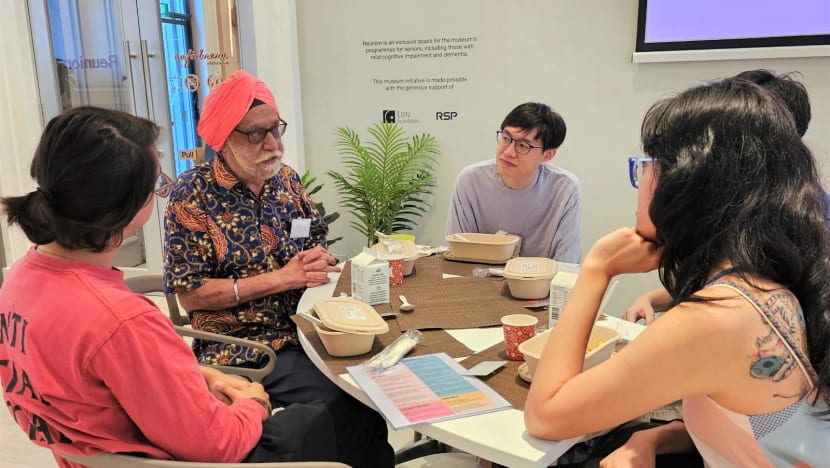
Among them are a former midwife who worked in villages during the baby boom, a coolie who went on to publish four books and an Indian-Chinese woman who speaks seven languages and was in an arranged marriage as a child.
My table had the company of Uncle Tan Kok Seng. All I knew about him from the introductions and the documentary trailer was that he wrote a book, Son of Singapore.
What I heard during a three-hour-long conversation with him were stories no history book could truly capture.
FROM COCONUT FARM TO ORCHARD ROAD
Uncle Tan had a kind smile and seemed much younger than his 84 years. Certainly, he displayed the memory of a young man.
He even remembered the Japanese occupation. One day, for example, he was with his father when he saw many birds flying above. In fact, they were planes, and his father told him the Japanese had surrendered.
WATCH: Let Me Tell You A Story — Life, Interrupted (46:52)
Welcome to a Singapore that we barely see traces of today. These childhood stories capture intimate glimpses of life in the 1930s and 40s and how the island was upended by the war.
Asked if those early memories tormented him, he told us simply: “I don’t think about those times. I live in the present; that’s how I can be so happy.”
It was after Singapore reverted to British rule when he embarked on the adventures of his youth. At the age of 15, he left his family’s coconut farm in Punggol to become a coolie.
“Our house was too crowded, so I ran away,” laughed the man who grew up with six brothers and five sisters.
Seeking independence, he lived in a shophouse at the old Orchard Road market, where he sold and delivered goods six days a week.
WATCH: Let Me Tell You A Story — Growing Pains (46:12)
Singapore in the 1950s and 60s suffered from disease to overcrowding to a population boom. Hear the stories of survival, where giving birth to more than ten children was nothing out of the ordinary.
What intrigued the 20-somethings at my table, however, was how he got from Punggol to Orchard Road: by bus. It came as a surprise that almost 70 years ago, there were bus routes to Singapore’s rural areas.
We also learnt that bus rides were not stuffy back then — as we had imagined — but were cool and comfortable even with no air conditioning.
When asked why that was, Uncle Tan paused to think before suggesting that fewer roads and a lack of tall buildings meant Singapore was cooler then.
He had completed only primary school before he started working, but even without the years of formal education we are accustomed to nowadays, his answers were insightful. And his story challenged the stereotype of “uneducated” seniors I had unknowingly held.
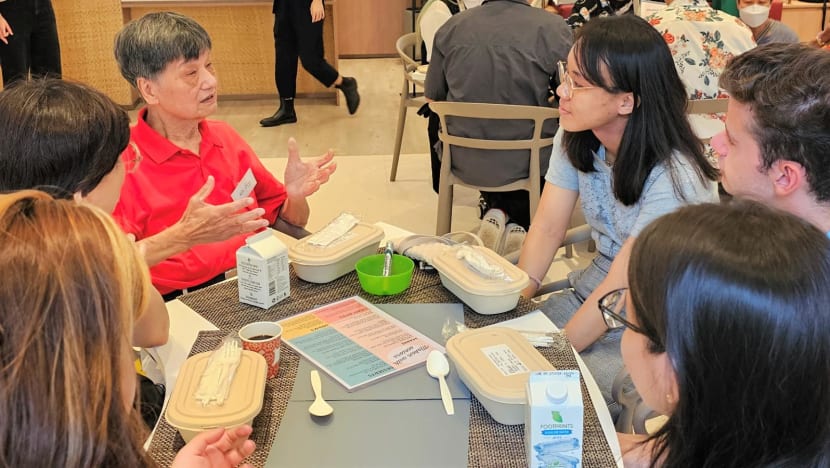
PICKING UP LANGUAGES LEFT, RIGHT AND CENTRE
In his time as a coolie, Uncle Tan met people from round the world. Through these interactions, he learnt Malay, English and more.
The native Teochew speaker picked up Hainanese from the chefs he delivered groceries to and Hokkien while working in the market. At the same time, he was surprised by British officers who spoke fluent Hokkien and Cantonese.
As a student of linguistics and multilingual studies at university, I was floored.
Learning all these languages was not easy, Uncle Tan shared. But “nothing is ever easy”, he told us. English, for example, was utterly foreign to him. But he made the effort to learn it from the British officers he befriended.
As he wrote in Son of Singapore, “How is it there are all these foreigners speaking our languages, yet I cannot speak one of theirs?”
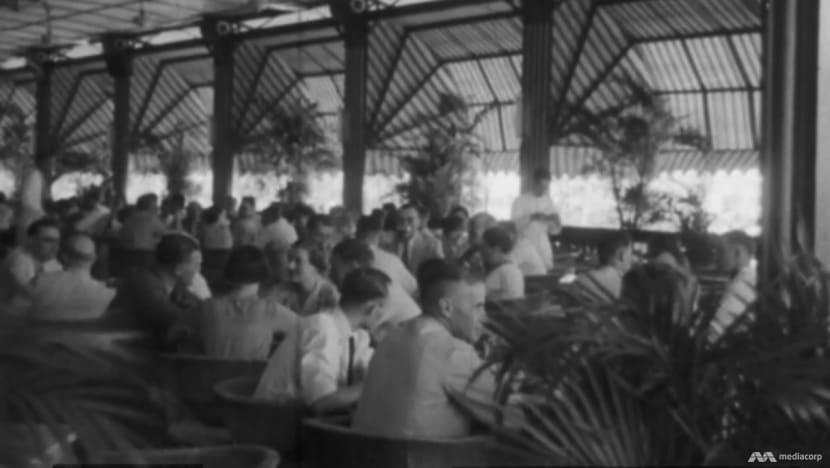
In a time before the Internet and the magic of instant translations, he managed to learn by talking to different people day after day and by carrying pocket dictionaries.
He is grateful to have learnt English all those years ago, he said. It stands him in good stead when he communicates with his grandchildren and great-grandchildren, who do not speak much Mandarin and no longer know their native Teochew.
“I talk to them in my broken English,” he said with a laugh and tapped his smartphone. “And they teach me how to use this!”
For him, learning to use the smartphone has been more difficult than picking up the languages he did.
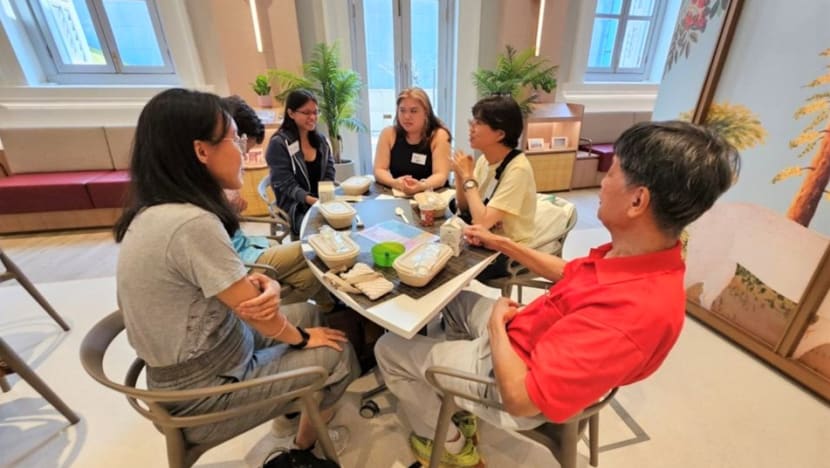
‘TOO GOOD’ A STORY TO KEEP TO HIMSELF
His journey as a writer, on the other hand, started purely by chance — after he travelled to the United Kingdom with his British friends and experienced the hippy culture of the 1960s.
This new, Western world was a culture shock for him, coming as he did from conservative Singapore. It made him want his life story to be a legacy he could leave to his children.
Later on, while working in Hong Kong as a driver for a British diplomat he had befriended previously, he began to write Son of Singapore at night in his quarters.
The Briton, intrigued, asked if he could read the book. As it was written in Mandarin, Uncle Tan translated some excerpts and read them out to his boss.
“He told me, ‘Kok Seng, this is too good to keep to yourself! You must publish this,’” Uncle Tan recounted. “I told him there’s no way I can write this in English.”
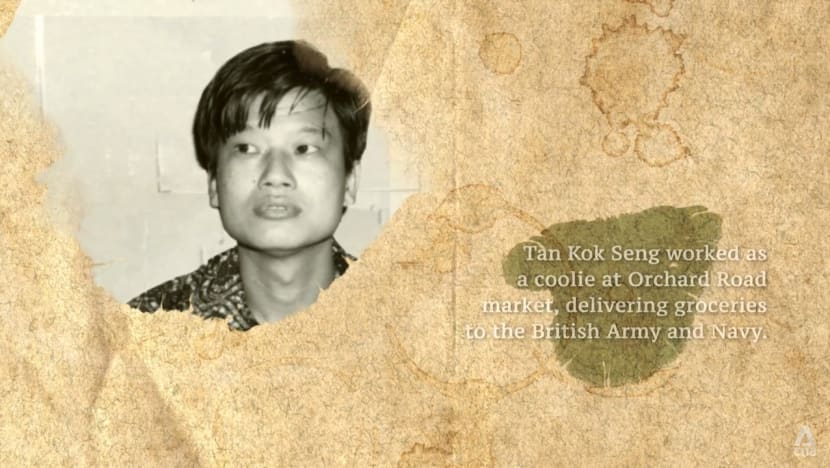
His boss was insistent and offered to write it for him, so night after night, Uncle Tan went to his boss’s office and dictated the book. Together they penned it over the course of several months.
His first autobiography did so well he followed it up with Man of Malaysia, before he concluded his biographical trilogy with Eye on the World. Then his storytelling evolved as he wrote his only novel, Three Sisters of Sze.
That is four more books than he originally planned to write.
WHAT UNCLE TAN DOES NOWADAYS
As we came to the end of the conversation, I asked Uncle Tan what he does in his free time now.
He reads a lot: news, fiction, non-fiction and just about everything. “My eyesight still allows me to read, so I’m thankful,” he said.
We also asked him if he watched television very much, as some seniors do. He said he only really watches news and documentaries.
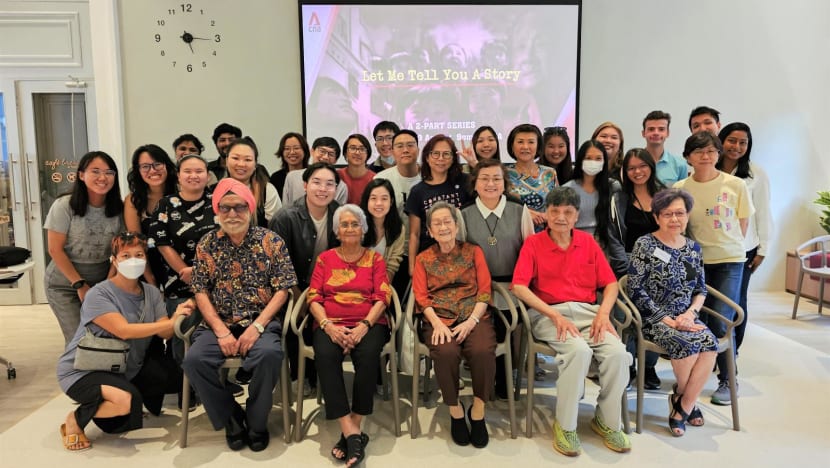
His love of storytelling made me realise how valuable it was to hear his stories in his own words.
Hearing about the intricacies of his life, I realised that history books do not do justice to the experiences of the generations before ours.
Besides Uncle Tan, the series Let Me Tell You A Story features Rasamal Nadayson, who was raised in poverty and was in an arranged marriage. Her story spoke to me because of the myriad of languages she spoke.
Lai Kum Yoong, meanwhile, was a midwife who once delivered a baby in a car, even though the baby had emerged backwards.
I could not hear their stories all in one afternoon, but the experience reminded me of the chats I had with my grandparents as a child and my sense of wonder at the people who have lived through Singapore’s history.


